
The Trans-Siberian Railway (Transsib, Транссиб connects European Russia to the Russian Far East. Spanning a length of over 9,289 kilometers, it is the longest railway line in the world. It runs from the city of Moscow in the west to the city of Vladivostok in the east.

Irkutsk Oblast is a federal subject of Russia, located in southeastern Siberia in the basins of the Angara, Lena, and Nizhnyaya Tunguska Rivers. The administrative center is the city of Irkutsk. It borders the Republic of Buryatia and the Tuva Republic in the south and southwest, which separate it from Khövsgöl Province in Mongolia; Krasnoyarsk Krai in the west; the Sakha Republic in the northeast; and Zabaykalsky Krai in the east. It had a population of 2,370,102 at the 2021 Census.
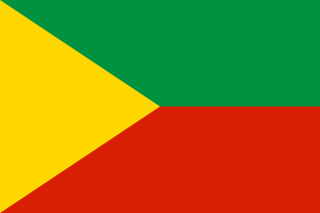
Chita Oblast was a federal subject of Russia in southeast Siberia, Russia. Its administrative center was the city of Chita. It had extensive international borders with China (998 km) and Mongolia (868 km) and internal borders with Irkutsk and Amur Oblasts, as well as with the republics of Buryatia and Yakutia. Its area was 431,500 square kilometers (166,600 sq mi). Population: 1,155,346 (2002 Census); 1,377,975 (1989 Census).

The Russian Far East is a region in Northeast Asia. It is the easternmost part of Russia and the Asian continent; and is administered as part of the Far Eastern Federal District, which is located between Lake Baikal in eastern Siberia and the Pacific Ocean. The area's largest city is Khabarovsk, followed by Vladivostok. The region shares land borders with the countries of Mongolia, China, and North Korea to its south, as well as maritime boundaries with Japan to its southeast, and with the United States along the Bering Strait to its northeast.
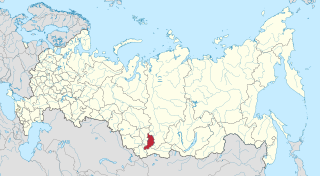
Khakassia, officially the Republic of Khakassia, is a republic of Russia located in southern Siberia. It is situated between Krasnoyarsk Krai to the north and the Altai Republic to the south.

The Far Eastern Republic, sometimes called the Chita Republic, was a nominally independent state that existed from April 1920 to November 1922 in the easternmost part of the Russian Far East. Although theoretically independent, it largely came under the control of the Russian Soviet Federative Socialist Republic (RSFSR), which envisaged it as a buffer state between the RSFSR and the territories occupied by Japan during the Russian Civil War of 1917–1922. Its first president was Alexander Krasnoshchyokov.
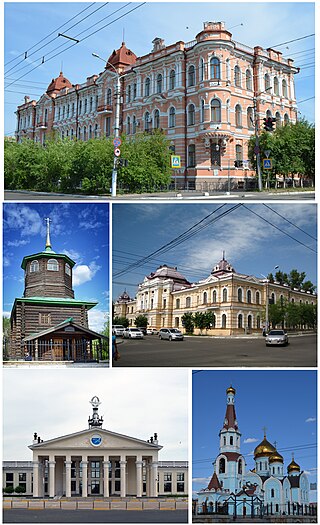
Chita is a city and the administrative center of Zabaykalsky Krai, Russia, located on the Trans-Siberian Railway route, roughly 900 kilometers (560 mi) east of Irkutsk.
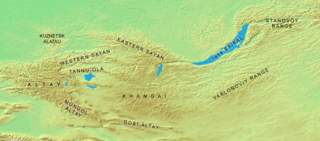
The Yablonoi Mountains or Yablonovy Mountains are a mountain range, in Transbaikal, Siberia, Russia. The range is sparsely inhabited with most settlements engaged in mining. The area is especially rich in tin. The city of Chita lies between the Yablonoi Mountains to the west and the Chersky Range to the east.
Geographically, Siberia includes the Russian Urals, Siberian, and Far Eastern Federal Districts.

Zabaykalsky Krai is a federal subject of Russia, located in the Russian Far East. Its administrative center is Chita. As of the 2010 Census, the population was 1,107,107.
Russia, the largest country in the world, has international land borders with 14 sovereign states as well as 2 narrow maritime boundaries with the United States and Japan. There are also two breakaway states bordering Russia, namely Abkhazia and South Ossetia. The country has an internationally recognized land border running 22,407 kilometres (13,923 mi) in total, and has the second-longest land border of any country in the world, after China. The borders of the Russian Federation were mostly drawn since 1956, and have remained the same after the dissolution of the Soviet Union. In 2014, Russia annexed Ukraine's Crimean peninsula in a move that remains internationally unrecognized.
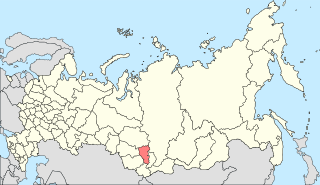
South Central Siberia is a geographical region north of the point where Russia, China, Kazakhstan and Mongolia come together.
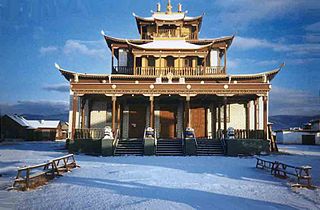
Historically, Buddhism was incorporated into Siberia in the early 17th century. Buddhism is considered to be one of Russia's traditional religions and is legally a part of Russian historical heritage. Besides the historical monastic traditions of Buryatia, Tuva and Kalmykia, the religion of Buddhism is now spreading all over Russia, with many ethnic Russian converts.
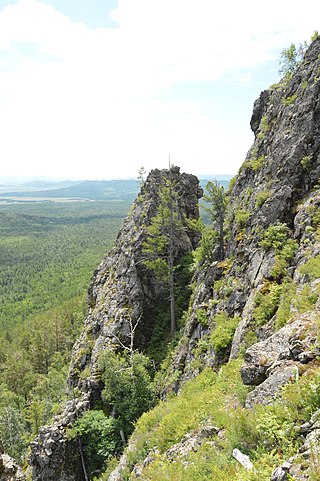
Alkhanay National Park encompasses the area around Mt. Alkhanai, a central focus and sacred mountain to the Buryats people, who today are the largest indigenous group in Siberia. Mt. Alkanai has been adopted as sacred by later Mongols, shamanistic people, and Buddhists. The Dalai Lama has made two unofficial visits to Alkhanay. The area takes its name from an old legend, in which a princess took refuge from her pursuers on the top of the mountain, defiantly shouting as they approached, "kill me!", which translates to "Alkhanai" in the local language. Despite the ancient name, the focus today of Buddhist pilgrims as they ascend the mountain pathway is one of peacefulness and healing. The park seeks to balance support for continued pilgrimage to the rock landforms and mineral springs, with conservation of nature and recreational tourism. Alkhanay NP is located in the Trans-Baikal region of Russia, about 300 miles east of the lake, and 75 miles north of Mongolia's northern border. It is in the administrative region of Aginsky District, Zabaykalsky Krai.
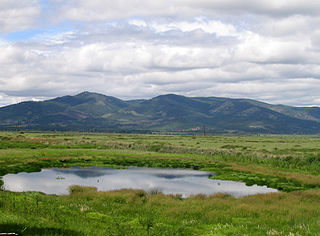
The Trans-Baikal conifer forests ecoregion covers a 1,000 km by 1,000 km region of mountainous southern taiga stretching east and south from the shores of Lake Baikal in the Southern Siberia region of Russia, and including part of northern Mongolia. Historically, the area has been called "Dauria", or Transbaikal. It is in the Palearctic realm, and mostly in the boreal forests/taiga biome with a subarctic, humid climate. It covers 200,465 km2 (77,400 sq mi).

The Daurian forest steppe ecoregion is a band of grassland, shrub terrain, and mixed forests in northeast Mongolia and the region of Siberia, Russia that follows the course of the Onon River and Ulz River. The region has been described as a “sea of grass that forms the best and most intact example of an undisturbed steppe ecosystem and is also one of the last areas in the Palearctic that still supports stable herds of larger vertebrates” in a semi-mountainous area. The area also has flat wetlands that are important to migratory birds. The ecoregion is in the Palearctic realm, with a dry-winter subarctic climate that borders on a very cold semi-arid climate (BSk) in its southwestern parts. It covers 209,012 km2 (80,700 sq mi).

The 2019 Siberian wildfires began in July 2019 in poorly accessible areas of northern Krasnoyarsk Krai, Sakha Republic and Zabaykalsky Krai, all in Siberia, Russia. By the end of the month the size of the fires reached 2,600,000 hectares. As of 30 July, there had been no reported deaths or injuries due to the fires.

From June 2021, the taiga forests in Siberia and the Far East region of Russia were hit by unprecedented wildfires, following record-breaking heat and drought. For the first time in recorded history, wildfire smoke reached the North Pole.
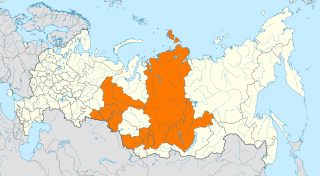
The 2022 Siberian wildfires are a series of ongoing wildfires in Siberia, Russia that began in Siberia in early May 2022. Fires are concentrated in the Krasnoyarsk, Altai, Irkutsk, Kemerovo, Omsk, Kurgan regions, Khakassia and Sakha republics. The total area of fires, as of 15 May, is about 20 thousand hectares, and since the beginning of 2022 – more than 100 thousand hectares.

















